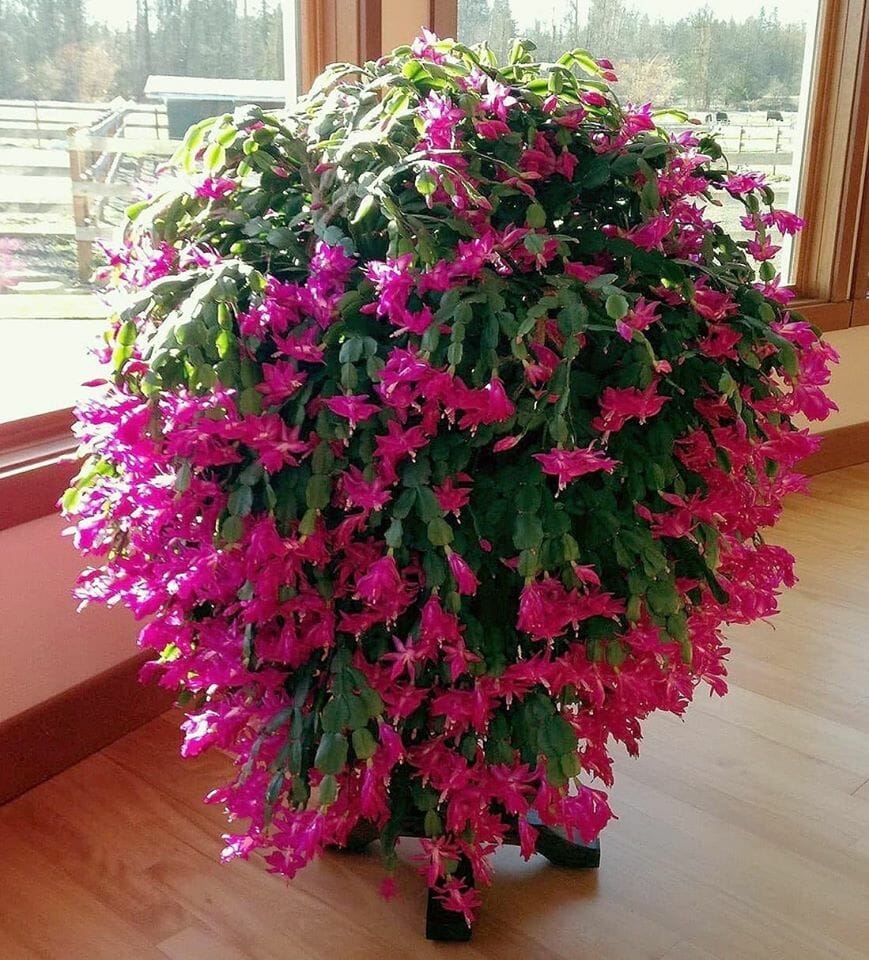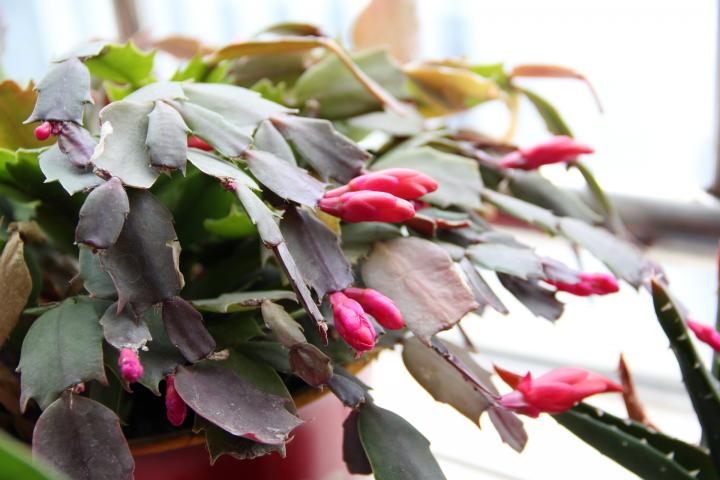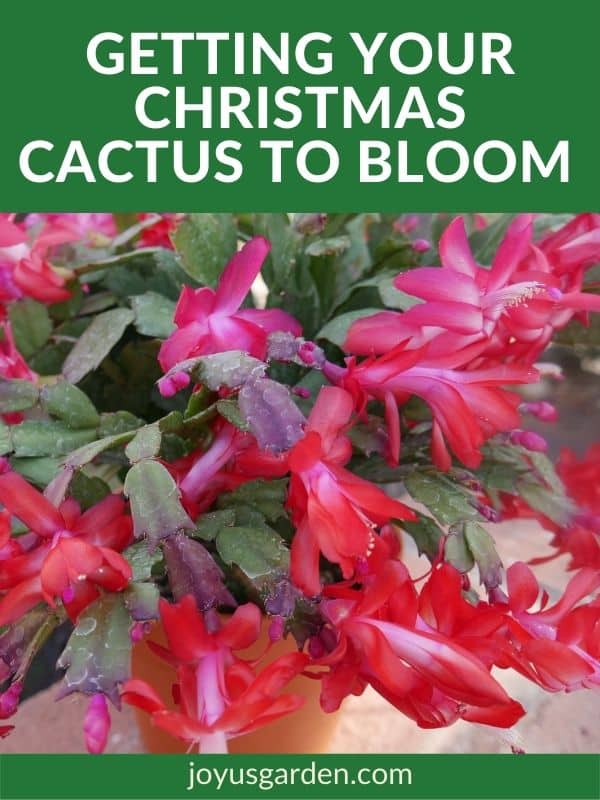Unlocking the Secrets of Christmas Cactus Care
The Christmas cactus is a beloved holiday plant, known for its vibrant flowers and low-maintenance care. To truly thrive, these plants require attention to their specific needs. Learning how to grow Christmas cactus is crucial for optimal growth and blooming. With the right care, your Christmas cactus can become a stunning centerpiece for your holiday decor. By understanding the unique requirements of these plants, you can create an environment that fosters healthy growth and encourages blooming. In this article, we’ll explore the essential tips and techniques for cultivating a healthy and flourishing Christmas cactus.
Choosing the Right Environment for Your Christmas Cactus
When it comes to growing a thriving Christmas cactus, the environment plays a crucial role. To create an ideal setting for your plant, it’s essential to understand the specific lighting, temperature, and humidity conditions it requires. Christmas cacti prefer bright, indirect light, making east- or west-facing windows ideal. Avoid direct sunlight, which can cause burning and discoloration. In terms of temperature, these plants thrive in cooler temperatures between 60-70°F (15-21°C), making them a great option for rooms with consistent temperatures. Humidity is also vital, with a range of 50-60% ideal for optimal growth. To replicate these conditions in your home, consider using a humidifier and keeping your plant away from heating vents and radiators. By providing the right environment, you’ll be well on your way to learning how to grow Christmas cactus and enjoying its beautiful blooms.
How to Water Your Christmas Cactus for Maximum Growth
Watering is a crucial aspect of learning how to grow Christmas cactus, as it directly impacts the plant’s health and blooming potential. Overwatering is a common mistake that can lead to root rot and other problems, while underwatering can cause the plant to become stressed and weak. To avoid these issues, it’s essential to establish a consistent watering schedule. Water your Christmas cactus when the top inch of soil feels dry to the touch, usually every 7-10 days during the spring and summer months. During the fall and winter, reduce watering to once every 4-6 weeks, as the plant is dormant. Make sure to water thoroughly, allowing excess water to drain from the pot to prevent waterlogged soil. By following these guidelines, you’ll be able to provide your Christmas cactus with the right amount of moisture to thrive and bloom beautifully.
Fertilizing for Fabulous Flowers and Healthy Growth
Fertilizing is a crucial step in learning how to grow Christmas cactus, as it provides essential nutrients for healthy growth and blooming. A balanced fertilizer with a ratio of 20-20-20 (nitrogen-phosphorus-potassium) is ideal for Christmas cacti. Apply the fertilizer during the growing season (spring and summer) to promote healthy stem growth and encourage blooming. Dilute the fertilizer to half the recommended strength to avoid burning the roots. For organic enthusiasts, a balanced, water-soluble fertilizer made from natural ingredients like fish bone meal or alfalfa meal is a great alternative. Avoid fertilizing during the fall and winter months when the plant is dormant, as this can cause new growth that may not have time to harden off before the cold weather sets in. By fertilizing your Christmas cactus correctly, you’ll be rewarded with vibrant flowers and a lush, full plant that will thrive for years to come.
Pruning and Grooming for a Fuller, More Vibrant Plant
Pruning and grooming are essential steps in learning how to grow Christmas cactus, as they help maintain the plant’s shape, promote healthy growth, and encourage blooming. Prune your Christmas cactus in the spring, after it finishes blooming, to encourage bushy growth and prevent the plant from becoming leggy. Remove any weak or damaged segments, and cut back long stems to encourage branching. Grooming your Christmas cactus regularly can also help prevent pests and diseases from taking hold. Inspect your plant regularly for signs of pests or disease, and remove any affected segments promptly. By pruning and grooming your Christmas cactus correctly, you’ll be rewarded with a fuller, more vibrant plant that will thrive and bloom beautifully. Additionally, pruning can help encourage your Christmas cactus to produce more flowers, making it a crucial step in how to grow Christmas cactus.
Pest Control and Common Problems: Troubleshooting Tips
When learning how to grow Christmas cactus, it’s essential to be aware of common pests and problems that can affect these plants. Mealybugs, spider mites, and scale are common pests that can infest Christmas cacti, causing damage to the leaves and stems. To control these pests, use insecticidal soap or neem oil, and isolate infested plants to prevent the pests from spreading. Root rot is another common problem that can occur if the soil is too wet or if the plant is overwatered. To prevent root rot, ensure good drainage in the pot, and avoid getting water on the leaves or crown of the plant. Other common problems include fungal infections, which can be treated with fungicides, and nutrient deficiencies, which can be addressed by fertilizing with a balanced fertilizer. By being aware of these common pests and problems, and taking steps to prevent and address them, you can ensure your Christmas cactus remains healthy and thrives. Regularly inspecting your plant and taking prompt action when problems arise is crucial in how to grow Christmas cactus successfully.
Propagation and Repotting: Expanding Your Christmas Cactus Collection
Learning how to grow Christmas cactus involves understanding the art of propagation and repotting. Propagating Christmas cacti is a great way to share plants with friends and family, or to create new plants for your own collection. One of the easiest ways to propagate Christmas cacti is through stem cuttings. Simply cut off a segment of stem, allow it to dry for a few days to form a callus, and then plant it in well-draining soil. Keep the soil moist and warm, and roots should develop within a few weeks. Another method of propagation is through division, where you separate the roots of a mature plant and replant the separated sections. This method is best done in the spring, when the plant is actively growing. Repotting your Christmas cactus is also an essential part of its care. Choose a pot that is only slightly larger than the previous one, and use a well-draining potting mix. Repot your plant in the spring, when it becomes pot-bound, to give it fresh soil and a larger pot to grow in. By mastering the art of propagation and repotting, you can expand your Christmas cactus collection and enjoy these beautiful plants for years to come. With proper care and attention, your propagated plants will thrive and provide you with a bountiful display of colorful flowers, making it a crucial step in how to grow Christmas cactus successfully.
Timing is Everything: Encouraging Your Christmas Cactus to Bloom
When it comes to how to grow Christmas cactus, timing is crucial in encouraging these plants to bloom. Christmas cacti are short-day plants, meaning they require shorter days and cooler temperatures to induce flowering. To simulate winter conditions, start reducing the temperature and light exposure in the fall, around September or October. Keep the plant in a cool, bright location with temperatures between 50-60°F (10-15°C) and reduce watering to once a month. This will help the plant prepare for the blooming season. In November or December, move the plant to a brighter location with temperatures around 65-70°F (18-21°C) to promote flowering. Make sure to provide the right care during the holiday season, including regular watering and fertilization, to encourage blooming. With proper timing and care, your Christmas cactus should produce beautiful, vibrant flowers in shades of pink, red, white, and yellow, making it a stunning centerpiece for your holiday decor. By understanding the importance of timing in how to grow Christmas cactus, you can enjoy a bountiful display of flowers and make the most of this popular holiday plant.




:max_bytes(150000):strip_icc()/christmas-cactus-4176983-7-3756e3cea70f4a6486af314de8dde16e.jpg)


:max_bytes(150000):strip_icc()/christmas-cactus-f0824e01-39f1261ef8684a2b843e87445275652f.jpg)

